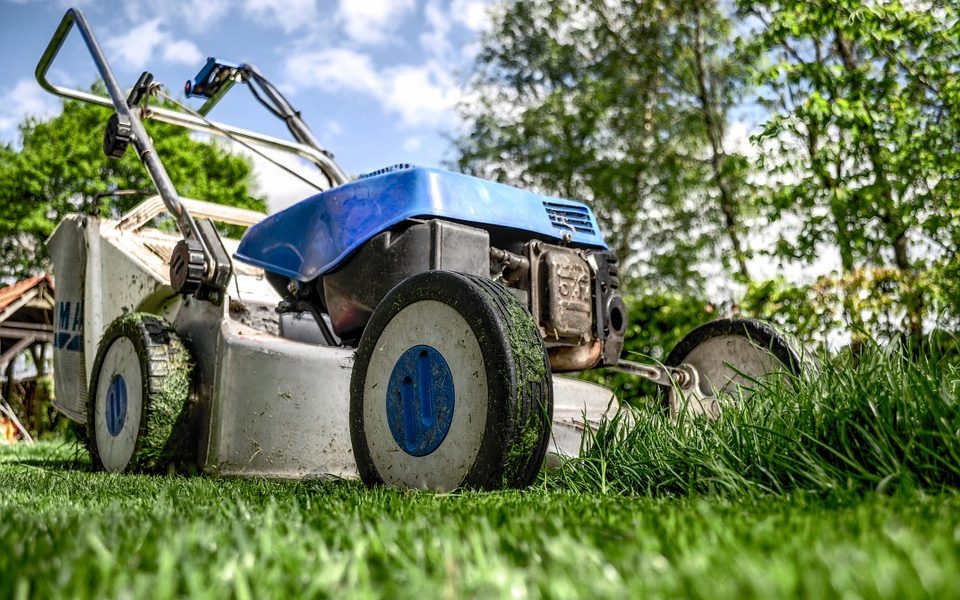Gardening, as they say, is not easy but not tough either. Maintaining healthy and appealing gardening can be a lot for someone who has just stepped into it. The idea itself sounds overwhelming and can even scare one away altogether!
Are you looking forward to setting up a mini kitchen garden of your own but have no idea where to start? We got you covered. Seeding the lawn is indispensable to have a fostering, lush and healthy grass. Here are a few valuable steps and techniques that can help you prepare the garden for seeding to get the best results –
1. Seed keeping the season in mind – It is a fact that you can seed as and when you please throughout the year, yet some seasons are more favorable for certain plants as compared to others. Add to it factors such as care and maintenance required, there are some reasons which make gardening a bit easy for you.
In case you seed your lawn during spring and summer, the plants will comparatively need more care and water. Weeds and crabgrass add a lot to competition, thus making it difficult for the gardener.
Ideally, it is recommended that you seed your lawn during late summer or fall. Early fall is also a good time to seed as seeds sowed during these days germinate faster in the warm soil and can keep establishing themselves in the soil through relatively cooler weather of fall and winter. As there is more moisture in the fall, you also need to sprinkle less.
2. Choose the right seed – There is absolutely nothing you can do for a seed if it is terrible. Bad seeds don’t grow well, does not matter how hard you work on them. Hence, it is crucial to select the right set of seeds.
For instance, if you are planning to plant some grass in your lawn, select a type of grass that is right for your lifestyle, financial plan, and the location of your garden. Consider factors like the kind of lawn that you desire along with the atmospheric growing conditions nearby you.
Factors like sunlight, pollution, fertilizers required by the seed, quality of the seed in general along with the time that you would be able to devote and so on also matter and must not be ignored.
3. Prepare the soil well – Preparing the soil well plays a crucial role in ensuring that the plants grow well. Once you are done choosing the right area for your garden or lawn, it is essential that you start preparing the soil. Doing it the right way is an investment for your yard.
First of all, make use of a decently sharp shovel to remove any existing grass from the lawn. If the area is quite large, you can even rent a sod cutter to get it done quickly. Walk around, take a look and scrutinize the area. Get rid of all the large rocks and debris, even out the ground while filling in all of those low spots.
If the soil is way too compacted, you can work it over with a tiller. The end goal is to make sure that the area is even and the soil is free of any lumps.
4. Watering the right way – Creating an attractive lawn of your own is not tough. You need to make sure that you are not overdoing or under doing anything. Let us consider watering the lawn, for instance. In case you are a newbie, experimenting with gardening, it is recommended that you go through some watering tutorials first.
Working with a newly seeded lawn, ensure that the first inch of the soil is comparatively moist. Don’t make it soggy, though. Properly mist the seeded area once a day. Increase or decrease the frequency depending on the weather conditions.
As the seeds start germinating, try keeping the top two inches of the soil moist. You may reduce the frequency considerably in the following weeks.
5. Ensure proper seed to soil contact – To grow properly, the seeds must be in good contact with soil. Options like aeration work just fine in this regard while leaving room for the seeds to fall into. The gardener may even add topsoil to a given piece of land, rake the seed into it. If this does not sound good enough, you can also experiment further and mix the seed into the topsoil before spreading.
6. Use the correct fertilizer – Seedlings are not mature enough to withstand enough of anything – be it sunlight, moisture or fertilizers. Hence, make sure you use a mild fertilizer in the right amount and spread it evenly.
A starter fertilizer would be ideal here. Starter fertilizers often contain phosphorus which is a crucial nutrient for seedlings. It helps in their better establishment resulting in the desired outcome. You may even perform a preliminary soil test before you start seeding.
This will help you know better what kind of soil it is and what it requires further. Equipment like lime and fertilizer spreaders, tailgate spreader or an Ag spreader can come handy here. Evenly spread fertilizers best benefit the soil promoting healthy growth.
7. Maintain the lawn well – Seeding is something whose outcome depends on a whole lot of factors. It is not just how you plant the seeds that matter, but how well-kempt the lawn is, how good the soil is, whether you are using the right equipment and so on.
Make sure no extra leaves are lying here and there on the ground. This will let the seedlings get the required amount of sunlight. Pay attention to soil test recommendations on additional fertilizer applications. Use the right set of lime and fertilizer spreaders for the purpose.
Thus, these were the top seven tips to seed a lawn properly. Gardening is a demanding activity. It needs a certain level of expertise. If you are a complete newbie and have no idea where to get the right seeds, and other gardening equipment like a shovel, tailgate spreader, or an Ag spreader, you should get some advice before proceeding. Log on to the internet and check out relevant posts online. Good luck!
Author Bio:
Thomas M Strother is the blogger at spreaders.com which specialize in making spreaders and dump trucks from the last 24 years. They provide quality products in agricultural areas like lime and fertilizer spreader, construction and other needs from tailgate salt spreader to litter spreader. They make sure that customer requirements are full filled.










